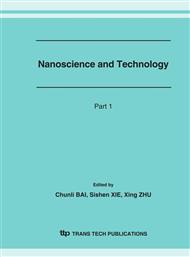p.603
p.607
p.611
p.615
p.619
p.623
p.627
p.631
p.637
The Meso- Piezo-Resistive Effects in MEMS/NEMS
Abstract:
Meso- piezoresistive effect is proposed, which is defined as “Strain Tuning of the resonant current”, in order to convert a weak mechanical signal into a strong tunneling current signal. If a mechanical signal is acted on an related mechanical nano-structure, the corresponding strain distribution will be produced in the structure; the built- in electric field will be resulted from the strain in system in some conditions; the strain and built-in electric filed will result in the change of electronic energy states; the change of electronic energy state will influence on the value of the tunneling current. Two experimental units are designed, one being used to detect an acoustic signal under sea, other to detect acceleration.
Info:
Periodical:
Pages:
619-622
Citation:
Online since:
March 2007
Authors:
Price:
Сopyright:
© 2007 Trans Tech Publications Ltd. All Rights Reserved
Share:
Citation:


